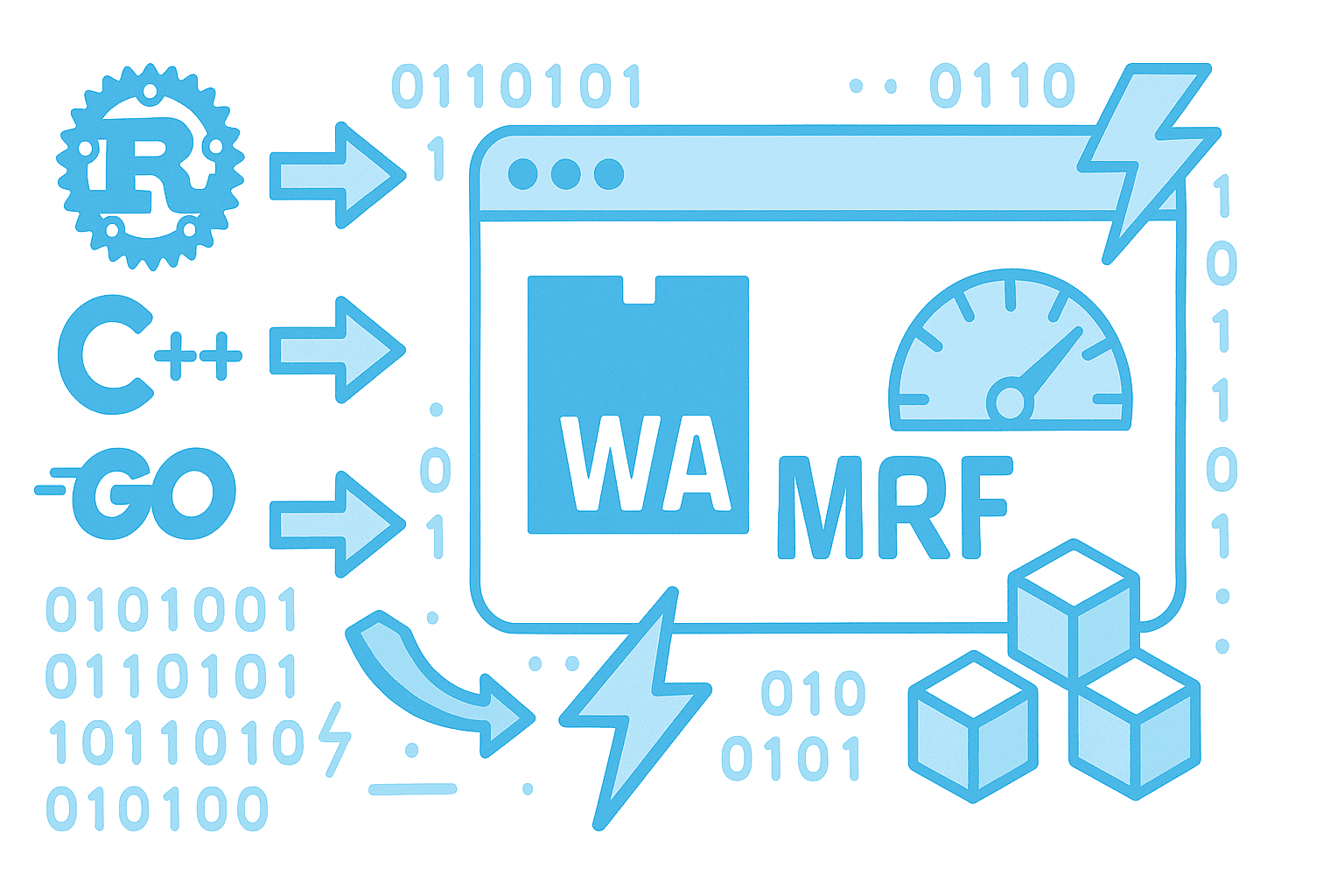The web has evolved far beyond static pages and simple scripts. Today, users demand fast, interactive, and feature-rich applications, whether it’s 3D graphics, real-time collaboration, or machine learning in the browser. However, traditional web technologies like JavaScript sometimes struggle with performance-intensive tasks. This is where WebAssembly (Wasm) steps in.
WebAssembly is a low-level binary instruction format designed to run at near-native speed in the browser. It allows developers to run code written in languages like C, C++, Rust, and Go directly in web environments, unlocking new levels of performance and portability.
What is WebAssembly?
WebAssembly (often shortened to Wasm) is:
- A portable binary format: Code is compiled into a compact binary that runs on any platform supporting Wasm.
- Language-agnostic: Developers can write code in multiple languages, then compile it to Wasm.
- Secure and sandboxed: Runs inside the browser’s security model, ensuring safety.
- Blazingly fast: Executes at speeds close to native machine code, thanks to efficient compilation and execution pipelines.
In short, Wasm bridges the gap between web convenience and native performance.
Key Features of WebAssembly
- Performance: Near-native execution speeds for complex applications.
- Portability: Runs consistently across all major browsers (Chrome, Firefox, Safari, Edge) and even beyond the browser (Node.js, serverless runtimes).
- Interoperability: Works seamlessly with existing JavaScript, allowing incremental adoption.
- Compactness: Binary format ensures faster downloads and reduced load times.
- Security: Designed with a sandboxed environment for safe execution.
Use Cases of WebAssembly
- Gaming in the Browser: Wasm makes it possible to run high-performance games without requiring plugins like Flash. Popular engines such as Unity and Unreal Engine can compile to WebAssembly, delivering smooth graphics and gameplay directly in the browser.
- Multimedia & Image/Video Editing: WebAssembly enables advanced media applications, like Photoshop alternatives or video editors, to run in the browser. By leveraging Wasm, these tools handle rendering, compression, and real-time editing efficiently.
- Machine Learning & AI: With Wasm, models can be executed in the browser with low latency, enabling features like real-time object detection, speech recognition, and personalization, all without sending data to remote servers.
- Cryptography & Security: Wasm can power cryptographic operations such as encryption, hashing, and digital signatures. Its performance makes it ideal for blockchain wallets, password managers, and secure communication tools.
- Scientific & Data Visualization: Researchers and data scientists can run heavy simulations or render complex 3D models directly in the browser. Wasm allows faster calculations compared to pure JavaScript.
- Cross-Platform Applications: Applications written in Rust, C++, or Go can be compiled into Wasm and run everywhere, from browsers to cloud environments, without rewriting the codebase.
- Server-Side Applications: Beyond the browser, Wasm is gaining traction in serverless platforms (like Cloudflare Workers). It enables fast, lightweight execution of functions with minimal cold-start time.
WebAssembly vs. JavaScript
| Feature | JavaScript | WebAssembly (Wasm) |
|---|---|---|
| Performance | Interpreted, slower for heavy tasks | Near-native speed |
| Language Support | JS only | Multi-language (C, Rust, Go, etc.) |
| File Size | Larger scripts | Compact binaries |
| Use Cases | UI, business logic, general tasks | Compute-heavy, performance-critical apps |
Importantly, Wasm doesn’t replace JavaScript, it complements it. JavaScript remains the backbone of web development, while Wasm handles performance bottlenecks.
The Future of WebAssembly
WebAssembly is still evolving, with new proposals and features in the pipeline:
- Garbage Collection (GC) support for better language integration.
- Threads and SIMD for even faster parallel execution.
- Component Model to simplify packaging and reuse of Wasm modules.
- WASI (WebAssembly System Interface) for extending Wasm beyond browsers into OS-level tasks.
As adoption grows, expect more frameworks, libraries, and tooling to make Wasm development easier and more powerful.
Conclusion
WebAssembly is more than just a performance boost for the web, it’s a fundamental shift in how we build and deliver applications. By enabling developers to compile code from multiple languages into a fast, secure, and portable format, Wasm is opening the door to new possibilities: immersive games, in-browser AI, and high-performance apps without plugins.
For businesses and developers, embracing WebAssembly means future-proofing applications, improving performance, and delivering cutting-edge user experiences.
🤝 Need a Custom RSVP System or Dashboard?
I help businesses build tools that actually work , even on tight deadlines.
Whether you're planning an event, need internal tools, or want a custom dashboard for your team , I can help.
Reach out
📧 Email: safi.abdulkader@gmail.com | 💻 LinkedIn: @abdulkader-safi | 📱 Instagram: @abdulkader.safi | 🏢 DSRPT
Drop me a line, I’m always happy to collaborate! 🚀



